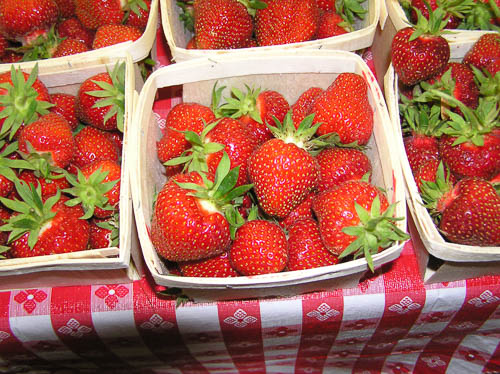
We have supplied Sequoia Strawberries for what seems like forever. It is our favorite for the typical homeowner. Why? Because a typical homeowner wants to pick a few strawberries every day for their breakfast cereal, dinner salads or nightly ice cream. It needs to bear fruit over a long period. Sequoia not only met that need, but it performed well across a wide range of climates and soil types.
Most commercial strawberry growers love just the opposite - the varieties that put on the crop nearly all at the same time. This makes it efficient for bringing in crews of workers to pick. Some homeowners like these kind as well if they are into making strawberry jam in big batches. But the typical homeowner is not into making preserves anymore.
We broker all the strawberries that we sell from the large commercial growers that grow them by the millions for the commercial strawberry farmers across the country. Our total strawberry purchases of all types total close to half a million, yet we are relatively “small potatoes” to these large growers.
Why is this important? Because Sequoia Strawberry has not been sold as a commercial crop for a very long time.
For several years, our grower has been asking us commit to a contract to grow a minimum of 100,000 Sequoia Strawberries. That was low risk since we sold about 100,000 a year. But last year they decided that more land at the higher elevations of Mount Shasta was needed for their large commercial customers needing fall plantings. Strawberries grown at the higher elevation went dormant early enough for October harvest and those grown at the lower Valley locations were able to be harvested in late December.
So in 2016-17 our supplier moved our Sequoia to late December arrival thus cutting off our robust November shipments for them. So now we have to commit to buying 100,000 Sequoia and only selling 50,000 for January and later shipments. Of course you see the problem in that.
So we are forced to drop the Sequoia and make suggested replacements for them.
Fortunately there are some really good choices and we have been selling two of them already and picked up a third that others across the country have been using instead of Sequoia.
Tristar Strawberry is very similar to the Sequoia in fruit size, taste and harvest behavior. It has the longest production season and an average sized berry just like Sequoia. It is as close to a replacement as possible – if not better. Many other wholesale nurseries across the country sell this variety. It too has been around for a long time. Like the Sequoia, it is not a commercial variety since the farmers love the newer bigger berries, but enough volume is purchased by others that it is still offered without special contract grows. Unfortunately it is still only offered for late December harvest meaning we only offer it for January and later shipments.

One happy replacement option is Albion Strawberry
For November shipments of Everbearing type strawberries, we are recommending two other excellent choices. Albion and Seascape. Both are hugely popular with farmers and those homeowners that buy from the stores and fruit stands. Neither fruit as long as Tristar, but the berries are very large, tasty and impressive. We have noticed that the Seascape seems to be one of the most popular for the local fruit stand growers in this hot valley and Albion for those along the California coast. I have grown them both successfully here.
Ron Ludekens 4-3-2017

